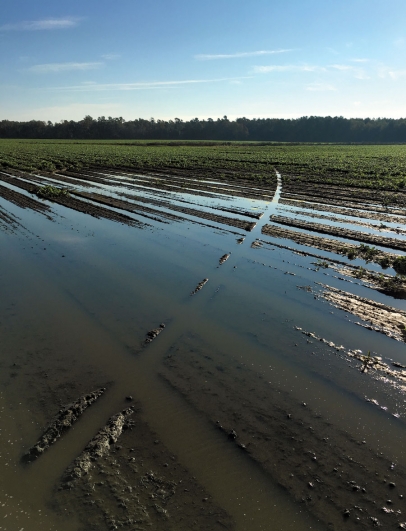After The Flood
The Prospects for South Carolina Farms in 2016
Farmers live rooted in the present tense, but always with an eye to the future, the season to come. Often, this is a hopeful looking forward, but the ravages of the 2015 growing season mean that South Carolina farmers are facing at some hard truths for the 2016 harvest.
According to the most recent study by the SC Department of Agriculture, 66% of the state was in moderate to serious drought when the rains came last October, 25 inches in some places, “the most significant rainfall event in the state’s recorded history.” Losses in the field, from cotton and soybeans to collards and broccoli, totaled over $300 million, but further losses from delayed planting inch that number higher.
Add to it the loss of hay for livestock.
Add to it the loss of jobs for workers during the flood and its aftermath, the support industry of agricultural services idle during that time.
All told, the impact of the floods on the state’s economy totals an estimated $588 million dollars.
“It’s the human aspect of it,” says Stefanie Kitchen, Executive Assistant to the Office of the Commissioner of the SC Department of Agriculture. “The numbers get thrown around, but we’ve heard around the office how devastating this is to the famers and their families. It’s one thing to lose a job, but farming is a lifestyle. They’ve lost their way of life.”
Stefanie is coordinating the new initiative Plant It Forward SC, the brainchild of the nonprofit South Carolina Advocates for Agriculture, along with the support of Clemson University, South Carolina Farm Bureau and Palmetto AgriBusiness Council. “The hope is to help farmers in some small way based on private donations,” she says, by defraying the cost of seed and hay loss. Farmers can complete an application online at the website www.plantitforwardsc.com, as well as share their stories of the flood and its impact.
Here in the Upstate, Clemson University Cooperative Extension has compiled a Flood Relief Hay List, with contact information of anyone with undamaged hay for sale to help bridge these winter months for livestock producers.
“Farmers are an especially resilient group of people,” says Stephen Nix, SC Food Systems Coordinator for Carolina Farm Stewardship Association, which serves farmers in both North and South Carolina. “Many will qualify for various aid programs to recover a portion of their losses, but many won’t. Whether you already have a personal relationship with a local farmer or not, I encourage all of us to identify a farmer and find out how to best support their needs.”





